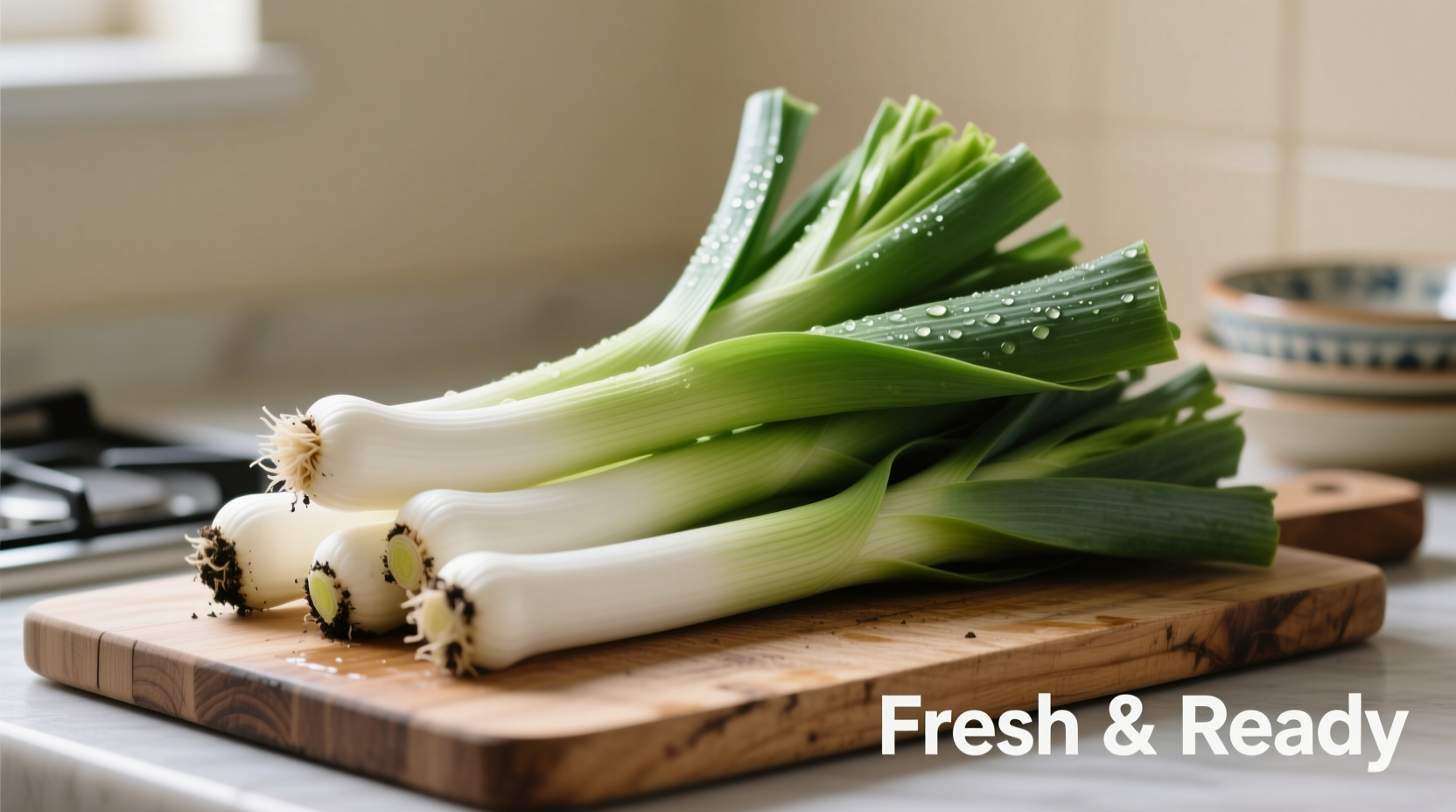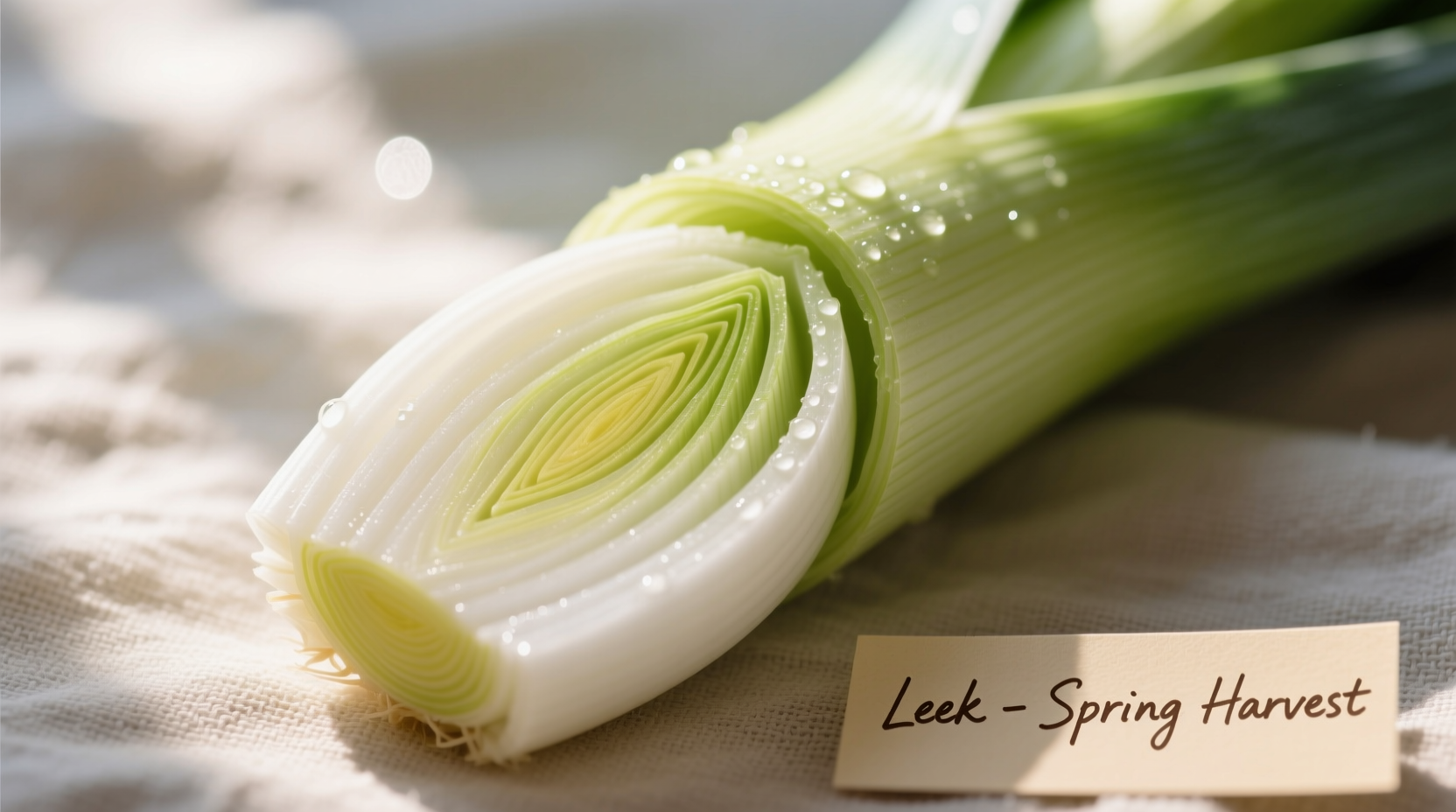Discover everything you need to know about leeks—a versatile kitchen staple that adds subtle depth to dishes without overwhelming other flavors. This guide reveals how to select, prepare, and cook with leeks like a professional chef, plus their nutritional benefits and common substitutions when they're not available.
Understanding Leeks: Nature's Gentle Allium
Leeks (Allium ampeloprasum var. porrum) stand apart from their pungent relatives in the Allium family. While onions develop underground bulbs, leeks form an elongated cylindrical stalk with tightly wrapped layers. The edible portion consists of the white base and tender light green sections, while the dark green tops typically serve as flavoring for stocks due to their fibrous texture.
According to the USDA Agricultural Research Service, leeks have been cultivated for over 4,000 years, with historical records showing their importance in ancient Egyptian, Greek, and Roman cuisines. Their mild flavor profile makes them exceptionally versatile across culinary applications where stronger alliums might dominate.
| Characteristic | Leek | Onion | Scallion |
|---|---|---|---|
| Flavor Intensity | Mild, sweet | Strong, pungent | Moderate |
| Edible Portion | White/light green stalk | Bulb | White root to green stem |
| Raw Texture | Firm, slightly fibrous | Crisp | Crisp |
| Cooked Transformation | Caramelizes gently | Softens completely | Wilted but retains shape |
Flavor Profile and Culinary Applications
Raw leeks offer a delicate onion-like flavor with subtle sweet notes and minimal bite. When cooked, their natural sugars caramelize slowly, developing complex umami characteristics without bitterness. This transformation makes them ideal for foundational dishes where you want aromatic depth without sharpness.
Chef Thomas Keller's The French Laundry Cookbook emphasizes leeks' role in creating "the holy trinity" of French cuisine (mirepoix), where they replace celery for a more refined flavor profile. Professional kitchens prize them for building flavor bases in soups, sauces, and braises where traditional onions might prove too assertive.
Nutritional Benefits Backed by Science
Leeks deliver impressive nutritional value with minimal calories. A single cup (89g) of cooked leeks contains:
- 54 calories
- 1.5g protein
- 13g carbohydrates
- 1.5g fiber (6% of daily value)
- 14% of daily vitamin K needs
- 11% of vitamin A requirements
Research published in the Journal of Agricultural and Food Chemistry identifies leeks as rich in flavonoid antioxidants, particularly kaempferol, which demonstrates anti-inflammatory properties. Their sulfur compounds support cardiovascular health similarly to garlic, though with gentler effects.
Selecting and Storing for Maximum Freshness
Choose leeks with crisp, bright green tops and firm white bases. Avoid any with yellowing leaves, soft spots, or flowering stalks, which indicate maturity and potential toughness. Larger diameter leeks (over 1.5 inches) often have tougher outer layers but remain perfectly usable with proper preparation.
For storage, keep unwashed leeks in the refrigerator's crisper drawer for up to two weeks. The University of California Cooperative Extension recommends wrapping them loosely in a damp paper towel inside a perforated plastic bag to maintain optimal humidity levels. Never store leeks near potatoes, which release gases that accelerate spoilage.
Mastering Leek Preparation: Avoiding the Grit Trap
The layered structure of leeks traps soil between leaves, making thorough cleaning essential. Follow this professional method:
- Cut off root end and dark green tops (reserve for stock)
- Slice lengthwise through the white base to just below the green transition
- Submerge in cold water and gently separate layers
- Swirl to release trapped dirt, changing water as needed
- Pat dry before slicing for cooking
For julienne cuts, slice crosswise after cleaning. For rounds, cut before the lengthwise split. Properly cleaned leeks should require no additional rinsing during cooking—a technique perfected in Michelin-starred kitchens to preserve flavor compounds.

Versatile Cooking Techniques for Home Chefs
Leeks shine across multiple cooking methods:
- Sautéing: Cook over medium heat 8-12 minutes until translucent and edges brown slightly
- Roasting: Toss with olive oil at 400°F (200°C) for 20-25 minutes for caramelized sweetness
- Grilling: Blanch first, then grill 3-4 minutes per side for smoky flavor
- Boiling: Simmer 10-15 minutes for soups and purees
The key difference from onions? Leeks require slightly longer cooking to fully soften their fibrous structure while maintaining shape. Overcooking causes disintegration, while undercooking leaves unpleasant chewiness.
Smart Substitutions When Leeks Aren't Available
While nothing replicates leeks' unique profile exactly, these substitutions work in various contexts:
- For raw applications: Thinly sliced scallions (use only white/light green parts)
- For cooked dishes: Yellow onions with 25% less quantity plus pinch of sugar
- For stocks: Combination of celery, parsley stems, and onion peels
- For garnishes: Chives or fennel fronds for similar visual appeal
Remember that leeks provide structural integrity in dishes where onions would melt completely—this makes them irreplaceable in recipes like vichyssoise or leek tarts where texture matters as much as flavor.
Frequently Asked Questions
Can you eat the green part of leeks?
The dark green tops are technically edible but extremely fibrous. Chefs typically use them to flavor stocks and broths, then discard after cooking. For salads or garnishes, only the light green portion just above the white base works well raw.
How do leeks differ from ramps?
Ramps (wild leeks) have a stronger garlic-onion flavor with a reddish stem base. They're seasonal spring delicacies, while cultivated leeks are available year-round with milder taste. Ramps' entire plant is tender and edible, unlike standard leeks' tough green tops.
Why do my leeks taste bitter?
Bitterness usually comes from improper cleaning (trapped soil) or overcooking. Always wash leeks thoroughly by separating layers in cold water. When cooking, avoid high heat that causes burning before the leeks soften completely.
Are leeks safe for pets?
No, leeks contain organosulfides that can damage red blood cells in cats and dogs. The ASPCA lists all Allium species (including leeks, onions, garlic) as toxic to pets. Keep cooked or raw leeks away from animal food areas.











 浙公网安备
33010002000092号
浙公网安备
33010002000092号 浙B2-20120091-4
浙B2-20120091-4